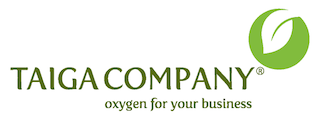To get started, reach out: info@taigacompany.com

How To Start Your Sustainability Podcast

The number of people listening to podcasts across the world is continuing to increase. In the UK, it is estimated that 20 million people will be listening to podcasts by 2024. That’s a huge potential audience. But there are a lot of podcasts out there too, fighting for people’s attention.
A podcast can be a great way to get your message out to people and really create and engage in conversation. But if you’ve never been involved in a podcast before, you may not know where to start.
Buying the right kit
You can get started in podcasting with just a few pieces of equipment in addition to your laptop or pc. Your basic equipment should include:
- A microphone
- Headphones
- Audio recording software
- Editing software
As with most AV equipment and software, entry prices can be extremely low, but it is best to look at reviews in order to find the best balance of price and quality for your budget. The best microphone for streaming or editing software can be hard to find if you don’t have any experience.
Decide on your identity and audience
Rather than just jumping into producing a podcast, you first need to get a few things straight, as this will inform your strategy. For example, will you cover sustainability as a wide concept or a specific niche? Who will be your target audience ? How often will you be producing content?
Defining your target audience is hugely important as it will allow you to focus your content, as well as inform your promotional strategy too.
Name your podcast
There are a number of different routes you can take when naming your podcast. For example, you could use something descriptive that tells a listener exactly what to expect. Or you could choose a clever name or play on words. As long as your show notes and keywords give an idea of the content, it shouldn’t make too much of a difference to how you are found on the various podcast platforms.
Plan your format and first episodes
If you approach everything in an unfocused way, podcasts have the habit of sucking up a lot of time and resources. The best way to avoid this is to plan ahead. Decide what the format of your podcast will be, what the running order will be, guests and any other sections you want to include. Create a running order for each episode and plan at least the first 3-5 to be recorded in advance of launch. This gives you extra breathing room to keep creating content at a manageable pace. Unless your podcast is time-sensitive (for example you cover news events), then you should be recording in advance.
Editing
Editing a podcast can be very time-consuming, especially if you haven’t done it before. There are many podcast editing software options out there, some you can even use from your smartphone. Many people choose to outsource this part of the podcast process to a freelancer or company that can do it to a high standard very quickly.
Art work
All podcasts need cover art. You need to create something that is professional-looking and eye-catching. If someone is scrolling through a lot of podcasts, you want them to stop at yours. Again this is something you can outsource, or there are a lot of great templates you can use on platforms such as Canva .
Show notes
Once you’ve published your podcast onto the various hosting services, you’ll need to show notes to go with it. Show notes are the calling card for your podcast, like a movie trailer. They give people information about your podcast and entice them to listen. Each podcast episode will also have its own separate description and resources.
Don’t neglect your show notes as they are very important for attracting new listeners, both on a podcasting platform and through search engines.
Promotional plan
Producing a great sustainability podcast is one thing but then you have to go out there and find your audience. This can be done in a number of ways such as email, social media, display advertising and PR. It may take some time for your profile and listener numbers to build, but keep consistent in your marketing efforts.
Takeaways
Podcasts are going from strength to strength and remain one of the best ways to attract a loyal audience, but they do take a good deal of planning and promotion to do well. There are so many great resources out there to help you every step of the way.

